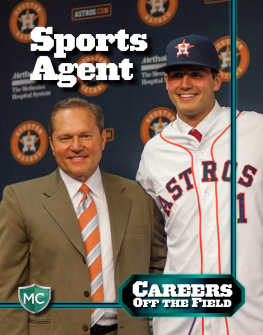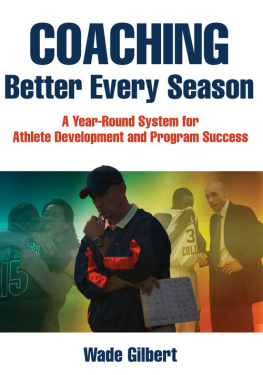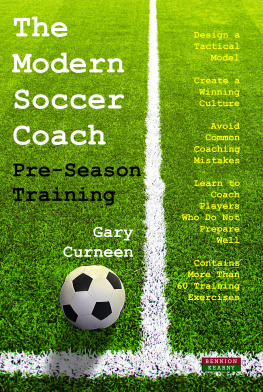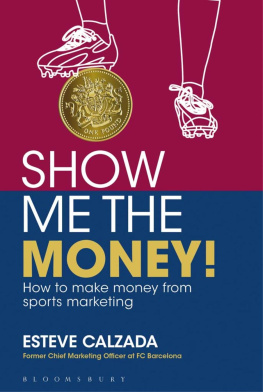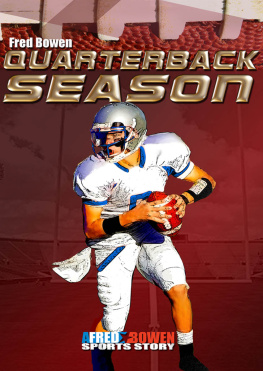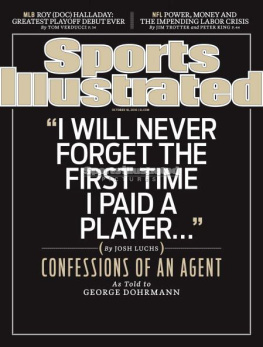Thank you for downloading this Simon & Schuster eBook.
Join our mailing list and get updates on new releases, deals, bonus content and other great books from Simon & Schuster.
C LICK H ERE T O S IGN U P
or visit us online to sign up at
eBookNews.SimonandSchuster.com
For Amy
Youve got to get to the stage in life where going for it is more important than winning or losing.
ARTHUR ASHE, Tennis Champion; Civil Rights Activist
Introduction
A fter graduating from the US Naval Academy at Annapolis, Maryland, where he won the Heisman Trophy, Roger Staubach served the four years in the Navy that came with a diploma from the academy. Then, in 1969, the man who had been college footballs best player joined the Dallas Cowboys. He took over as the starting quarterback in 1971, but Staubach may have made his smartest move in 1970, when he began selling commercial real estate in the off-season for the firm of Henry S. Miller. He continued to spend his off-seasons hawking office space throughout his career. In 1977, two years before he retired, he launched his own commercial real estate firm.
Staubach didnt begin showing Dallas-area office and warehouse space in the early 1970s because he loved the business or planned eventually to become a property mogul and launch his own company. He did it because he had a young family and he needed the money. In 1971 his job as the starting quarterback of the Dallas Cowboys paid him a whopping $25,000, about the same salary as a mid-level lawyer in the US Department of State at the time. I know this because my father was an assistant legal advisor in the State Department in 1971, and he was being paid slightly more than the starting quarterback for the Dallas Cowboys. Today the assistant legal counsel in the State Department makes about $80,000 a year. Tony Romo, the Dallas Cowboys starting quarterback, is currently playing under a six-year contract worth $108 million.
Roger Staubach bears no bitterness. In 2008 he sold his eponymous real estate company for $613 million. Still, comparing his football existence and Tony Romos leads to one very simple conclusion: in the span of a generation, everything about the sports business changed. And the changes touched even the people who connected with sports in the most innocent ways. This book is about the people behind the series of eventsmany of which began as happy accidentsthat created the modern world of sports. In this world money determines everything from who plays for what teams, to how dynasties are created. It determines how the stars of tomorrow are made. It shapes the star-centric style of play that dominates many of the worlds top sports leagues. It even determines how big a commitment children and their families are expected to give to their travel soccer team. This world is about the business of creating champions in societies conditioned to worship them, and to reward the most sought after of them with annual compensation of more than $100 million a year.
An essential shift occurred in the sports industry in 1960, before anyone would have ever thought to have called sports an industry or believed its biggest stars might one day be on equal footing with the people who ran it. No one, that is, besides Mark McCormack.
The story of professional sports in the United States for the first eight decades of the twentieth century is largely one of exploitation. Its a story of one-sided contracts and lopsided deals in which teams, leagues, national and international sports federations, and countless other moneyed interests who had put themselves into positions of power took advantage of athletes who were some combination of too young, too uninformed, or too uneducated to realize just how they were being used, and too unrepresented and unorganized to do anything about it. If there is a single turning point in the transformation of sports, then Mark McCormacks arrival on the scene is undoubtedly it. Before McCormackwho began a revolution when, in 1960, he convinced Arnold Palmer to hire him as his exclusive agentthe grand old men who ran pro sports believed the sports industry was about them. These were the blue blazers at the Royal and Ancient Golf Club of St. Andrews (known as the R&A), the green jackets at Augusta National, the bureaucrats at the International Olympic Committee (IOC), and the plutocrats who owned teams in the NFL or Major League Baseball. As far as they were concerned, the inefficiencies of sports were whatever prevented the maximum amount of money and power from flowing their way.
This was the way the world had always existed for them, no matter how they had come to their positions of power. Those paths were as different as the sports themselves. New York Giants owner Tim Mara, a well-known bookie, bought his franchise for $500 in 1925 when the NFL was first taking shape. The team has been the lone source of income for his family ever since. For William Wrigley Jr., the chewing gum and real estate industrialist, acquiring the Chicago Cubs baseball team in 1921 was like picking up a toy, as it was for so many owners who would come after him. Avery Brundage, who ran the IOC from 1952 to 1972, was an amateur athlete who competed with Jim Thorpe in the 1912 Summer Olympics, then climbed the ladder of the sports federations for the next forty years before becoming the supreme leader of the modern Olympic Games. Yet no matter how these menalmost all of them were malerose to power, invariably they and their peers shared that fundamental misunderstanding of the sports industry and its purpose. Mark McCormack, a Cleveland lawyer who cultivated a very good golfer named Arnold Palmer as his star client and essentially created the modern sports business, taught them and a generation of athletes otherwise.
At the heart of McCormacks ideas was a simple theory: sports were about the athletes, and especially the stars. The stars were the gasoline that made the engine of any sport go. People wanted to connect with them, however they could. They were a salable commodity that was being undervalued, and by undervaluing the athletes, the industry was preventing these athletes and the sports themselves from being as good as they could be.
McCormack didnt stop there. His philosophy wasnt just about demanding higher salaries and finding ways to enrich the clients he represented. It was about creating an environment where television networks could give fans the convenience of watching competitions from all over the world in the comfort of their homes; where sporting events offered those fans an opportunity to get a decent meal instead of a greasy hot dog and a flat beer or soda; where a company could delight in associating with a superstar athlete or the worlds grandest competitions. McCormack understood that sport was far more complicated than a zero-sum power struggle between labor and management. Yes, the more control and freedom the athletes had, the better off they would be, but he preached that everyone else would be better off, too. With more money and freedom, the athletes could train more, which would improve the quality of the competition, which in turn would make sports more valuable as a form of live and televised entertainment. That would provide more money for leagues and event organizers to invest in the experience for fans at stadiums, arenas, golf courses, and ballparks. Then they could charge higher prices, with some portion of the money flowing back to the players, which would make their jobs even more desirable, stoking competition and raising the quality of play all the way down to the youth level, allowing the whole process to snowball. McCormack was determined to make life better for the athletes, but in doing so he could make it better for everyoneleagues, team owners, athletic federations, and fans. That was his plan.
Next page



